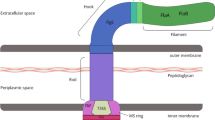Abstract.
Enterococcal clinical isolates were investigated for the ability to form biofilm on inert surfaces, as a measure of slime production, in an attempt to find new possible virulence factors for these microorganisms. This property was commonly found among Enterococcus faecalis. Also E. faecium isolates were able to form biofilm, although to a lesser extent; for this species, however, biofilm formation seemed more frequently associated with isolates from infection rather than with environmental strains or isolates from healthy individuals. Biofilm formation was strongly affected by the presence of an additional carbohydrate source in the medium, or by iron deprivation, indicating a role of slime for survival in stressful conditions. Slime-producing E. faecalis were able to survive inside peritoneal macrophages for extended periods compared to slime-negative strains or to slime-positive bacteria grown in conditions depressing slime production. In particular, slime-producing and slime-negative cells showed a decrease of 1 and 2 log units, respectively, at 1 h after infection; slime-negative cells were then rapidly killed, with clearance of bacterial cells at 24 h. Slime-producing bacteria persisted up to 48 h, which was the last time point examined, as after that time viability of both infected and non-infected macrophages started to decline. Scanning electron microscopy observations showed the presence of abundant amorphous extracellular material, of possible polysaccharide nature, embedding bacterial cells to form a multilayered biofilm. Even in conditions not supporting biofilm formation, bacterial cells appeared capsulated, suggesting that capsule and slime might represent different structures. Genes belonging to the epa locus or to a putative icaA homolog did not seem to be involved in synthesis and export of slime.
Similar content being viewed by others
Author information
Authors and Affiliations
Additional information
Electronic Publication
Rights and permissions
About this article
Cite this article
Baldassarri, L., Cecchini, R., Bertuccini, L. et al. Enterococcus spp. produces slime and survives in rat peritoneal macrophages. Med Microbiol Immunol 190, 113–120 (2001). https://doi.org/10.1007/s00430-001-0096-8
Received:
Issue Date:
DOI: https://doi.org/10.1007/s00430-001-0096-8




